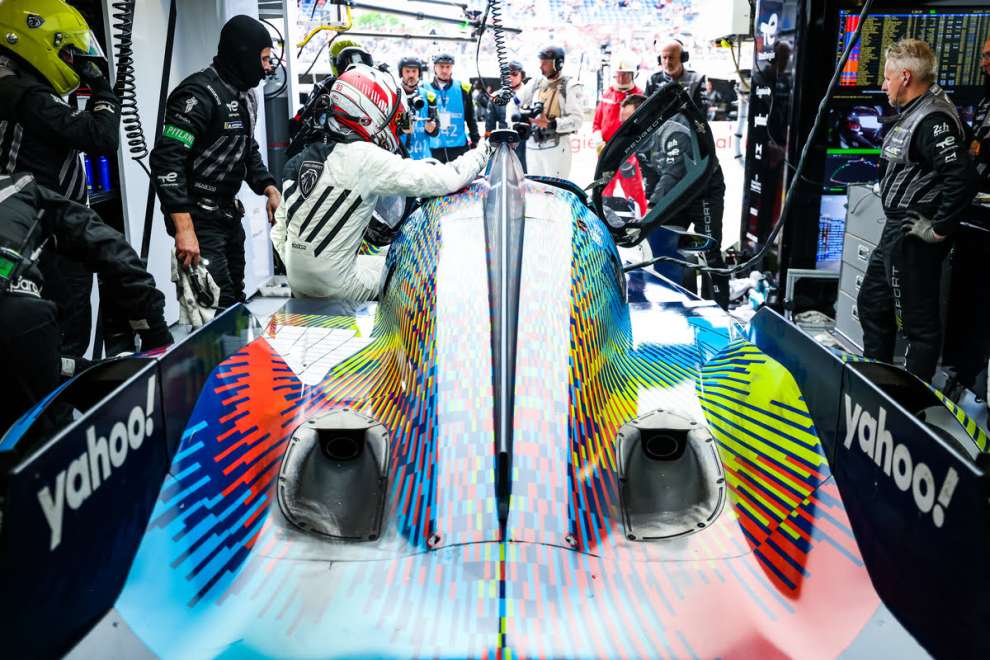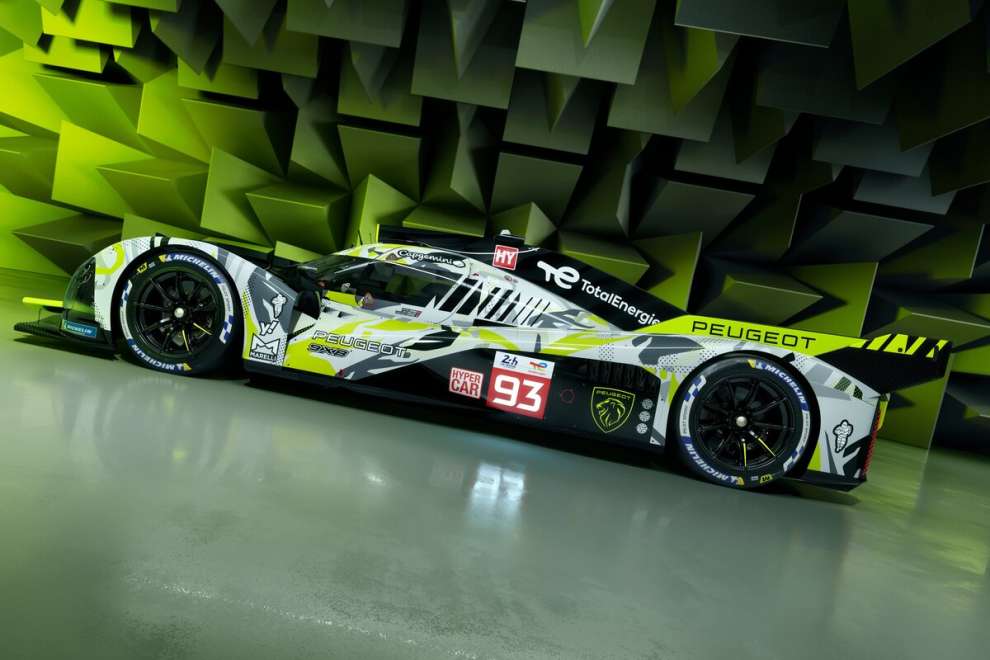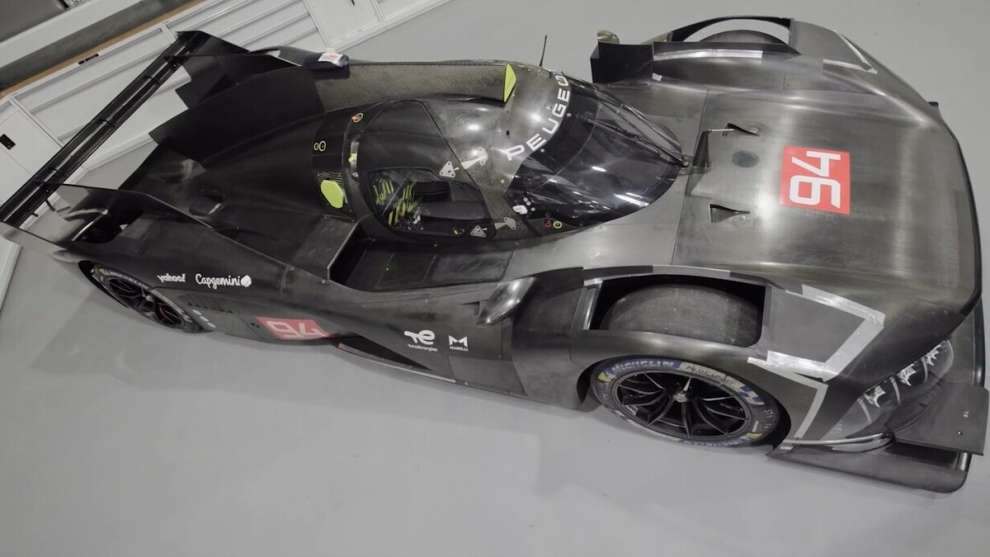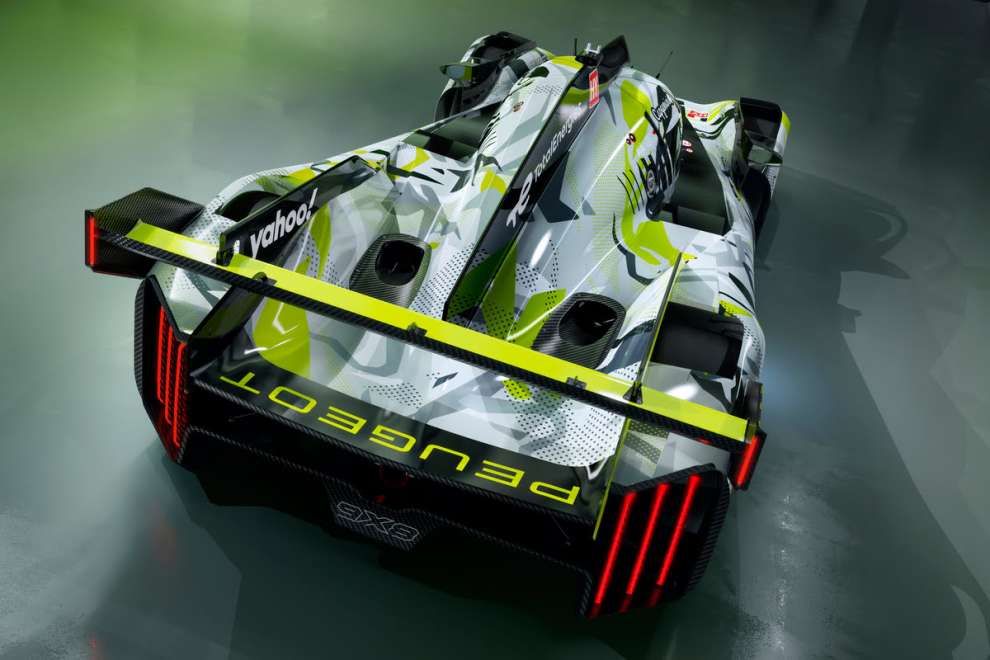By Carlo Platella
Once upon a time there was the Wingless Hypercar, which surprised the world in 2022 by presenting itself as the only car in the modern WEC era to do without a rear wing. However, the time has come to turn the page at Peugeot, which presents a completely renewed 9X8, expected to debut at the next six hours of Imola. The revolution comes shortly after one of the most convincing performances of the Lion, with the wingless Hypercar that came close to second place in Qatar, before retiring at the end due to a technical problem.
The competitiveness in Qatar, however, should not be misleading, because Lusail's fast corners were well suited to a car created to make the most of the front tires while sacrificing the rear. A design choice, that of Peugeot, which could have also paid off at Le Mans, but counterproductive in the economies of an entire championship, given how the WEC regulations have evolved.
A car without a wing: the idea
To appreciate the revolution carried out by Peugeot, it is first necessary to understand what the initial concept was from which the team chose to move away. “When we started this project in 2020, the regulations were different”, explains technical director Olivier Jansonnie. “All LMHs should have been fitted with 31cm wide tyres, which are the ones we had until last year.”
At the beginning the 9X8 was born with all 31cm wide tires. To make the most of them, Peugeot focuses entirely on weight distribution and aerodynamic balance shifted heavily towards the front. “Balancing the forces on the four wheelsyou can extract maximum adhesion from it”, comments Jansonnie. Over time, however, the WEC organizers changed the regulations, allowing the LMHs to mount wider tires at the rear and narrower at the front, with the aim of promoting convergence with the rear-wheel drive LMDhs of the IMSA regulations.
“We saw that there was potential in switching to 34 centimeter tires on the rear, but the weather didn't allow it.” Contrary to Ferrari and Toyota, Peugeot remains faithful to the four 31cm tyres, soon encountering their disadvantages on the track: “Compared to cars with wider rear tires we lacked traction, especially in slow corners. We had given up a bit of traction at slow speeds, in exchange for better exit from medium-speed corners.” It is no coincidence that the old 9X8 is showing off in Qatar, a circuit with few slow corners and plenty of medium-high speed bends.
The renunciation of the winger
In this context, the absence of the rear wing has never been Peugeot's ultimate objective, but rather a functional feature for a car with a balance shifted towards the front. Jansonnie continues: “When we went to the wind tunnel, we discovered that the car released too much downforce and aerodynamic resistance compared to the performance windows [concesse dal regolamento, ndr]. A quick fix was to remove the rear wing and the car at that point was not far from the objectives.”
The removal of the rear wing would create imbalances for any other car, but not for a car born with an aerodynamic balance greatly shifted towards the front to accommodate the four identical tyres. “By shifting the weight and aerodynamic balance towards the front, there was really no need for a rear wing. We thought we'd focus more on the performance of the bottom than the wing itself.” explains the technical director. However, this decision also soon turns out to be counterproductive, making it difficult to stabilize the floor at constant heights from the ground while driving and failing to exploit the maximum aerodynamic performance. Qatar's level tarmac was another welcome anomaly that helped hide the 9X8's shortcomings in the opening race of the year.

The revolution
Toyota also initially fitted four tires of equal width, but already in 2022 the world champions switched to wider rear wheels. Peugeot, on the other hand, is convinced that the Balance of Performance would be enough to flatten the differences, quickly realizing that it had sinned by optimism. “We have made choices that are no longer the right ones and this difference in performance was not sufficiently compensated by the Balance of Performance”, Jansonnie's admission.
“The idea was to return to a design that is similar to that of our rivals, so that we can receive the same treatment with the Balance of Performance. This is the reason why we decided to give up using 31cm tires of the same width, switching to 29cm at the front and 34cm at the rear”.

The transition to wider rear tires helps to enhance traction when exiting slow corners, in a technical regulation which over the years has increasingly limited the front electric motor so as not to disadvantage the rear-wheel drive LMDhs. The new tire sizes drive a whole series of cascading changes to the car: “To allow the tires to work properly, we had to move the center of gravity of the 9X8, which required the moving of some components and the lightening of others”. Overall, the chassis, windshield, doors and upper air intake are the only parts of the car to remain unchanged, while several components of the engine, electronics and cooling system have been lightened or repositioned.
Here's the wing again
The addition of the rear wing is the standout feature on the new 9X8, but it's just one of many changes made to correct both the mechanical and aerodynamic balance. Jansonnie continues: “To have a better balancewe had to redistribute the aerodynamic forcesending up redesigning around 90% of the bodywork, of which the addition of the rear wing stands out”.

According to the regulations, Peugeot had to re-homologate the car, passing through aerodynamic checks in the Sauber wind tunnel. The Lion does not reveal how many of the five development tokens available have been spent, however also used to intervene on reliability. “We have decided to take advantage of this new approval to introduce some updates aimed at performance and reliability”, concludes the technical director.
Debut in Imola
The new look of the 9X8 is colored with another signature livery. After the 2023 colourway, which in addition to celebrating the centenary of Le Mans commemorated the thirtieth anniversary of Peugeot's hat-trick at the 24 hours, the 2024 livery signed by the artist Demsky proposes the lion logo reproduced on different scales. The new Hypercar will make its official debut at the 6 Hours of Imola next April.

“Our simulations and first track tests show that the car has more performance,” comments Jean-Marc Finot, senior vice president of Stellantis Motorsport. “We therefore hope to be among the top teams, without however approaching the minimum weight and maximum power limits of the Balance of Performance”. Words accompanied by a touch of pride, which reveal how the help received to compensate for the car's shortcomings with the BoP was not well received by Peugeot, aware of giving back a less than positive brand image. The new 9X8 was thus born with a dual mission: to conquer the 24 hours of Le Mans and redeem the reputation of the Stellantis brand.
#WEC #Peugeot #Mans #analysis #revolution